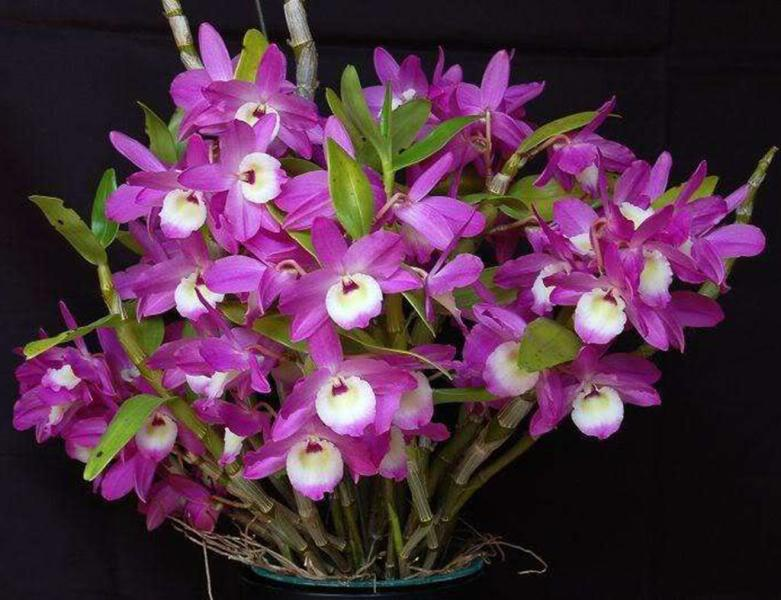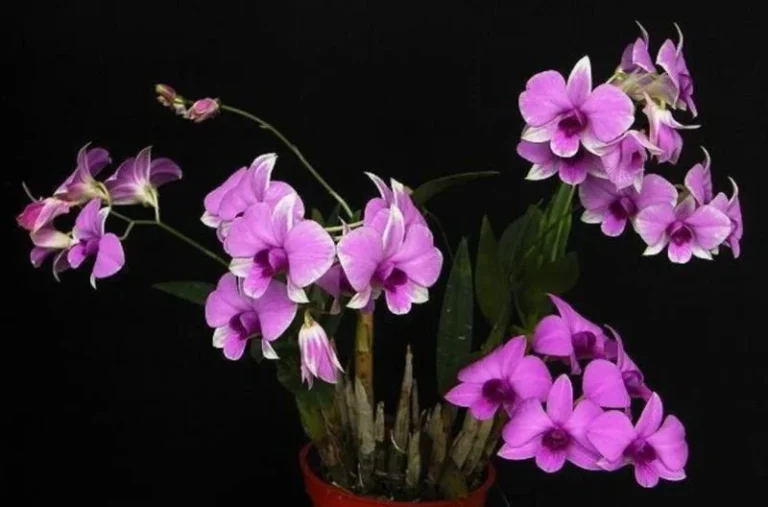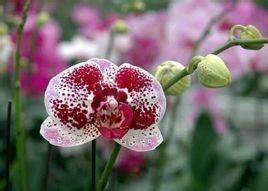Spring Dendrobium, also known as Beautiful Flower Dendrobium, is named for its spring flowering. It is a perennial epiphytic orchid plant of the Orchidaceae and Dendrobium genus. Compared with the common autumn Dendrobium, it has the characteristics of compact plant shape, many flowers, bright colors, fragrance, and extensive management. It is one of the more popular potted flowers in recent years.
The ancestor of Spring Dendrobium is the Nobile Dendrobium, which originated in China. It was first introduced to Europe by the United Kingdom for cultivation and was improved and bred. After World War II, Japan vigorously developed Spring Dendrobium and hybridized it with other varieties of Dendrobium to cultivate many horticultural varieties.
According to the different colors, Spring Dendrobium can be divided into three major series: red flower series, white flower series, and yellow flower series, and each series has different varieties.
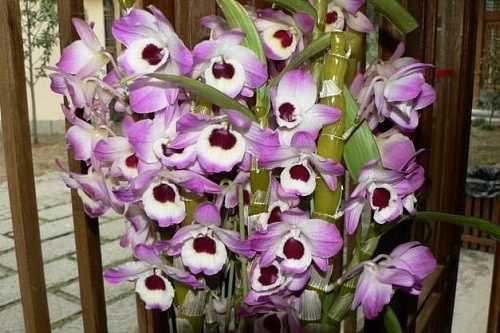
Spring Dendrobium, also known as the node flower Dendrobium, is a general term for the spring flowering in the genus Dendrobium (Dendrboium).
It is native to Asia and has 74 species in China. The pseudobulbs are cylindrical and often clustered together. An oblong leaf grows on the nodes. In autumn and winter, the leaves of most varieties begin to turn yellow and fall off. After a period of low temperature, flower buds sprout on the mature nodes. Cultivated in the natural environment of Guangzhou, it can bloom in March-May.
Basic information
Chinese name: Spring Dendrobium
Order: Orchidaceae
Latin name: Dendrboium
Other names: Beautiful flower Dendrobium, node flower Dendrobium
Family: Orchidaceae
Subfamily: Orchidaceae
Kingdom: Plant Kingdom
Phylum: Angiosperm
Genus: Dendrobium
Class: Monocotyledons
Species: Spring Dendrobium
Subclass: Liliaceae
Morphological characteristics
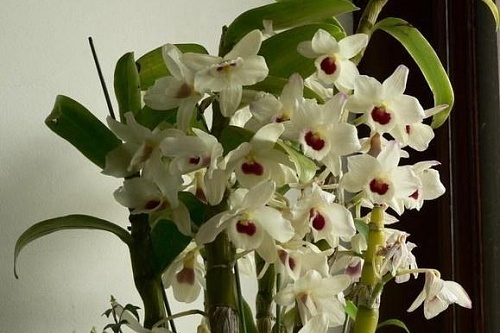
Spring Dendrobium is a deciduous variety of Dendrobium. The inflorescence grows on the upper stem node of the pseudobulb grown in the previous year, with 2 to 3 flowers in a bunch. After flowering, new buds grow from the base of the pseudobulb, which develop into new pseudobulbs that year, and the old stems gradually shrink and generally no longer bloom. Sometimes the dormant teeth on the old stems will germinate and grow into small plants with roots. These old pseudobulbs and small plants are usually used as propagation materials. After the weather turns cool in autumn, the plants gradually enter a dormant period and form flower buds at low temperatures.
Growth environment

Spring Dendrobium likes a warm and humid environment. The suitable temperature for growth and flowering is 10-30℃. It can tolerate low temperatures of 2-3℃ in winter and high temperatures above 30℃ in summer. However, too high or too low temperatures will inhibit plant growth and damage some leaves.
It grows well under sufficient and gentle sunlight. If the light is insufficient, the plant will grow too long, the leaves will be slender and tender, the leaves will turn dark green, the growth will slow down, and it will be prone to diseases and pests. In places with sufficient light, the plant will grow luxuriantly, the leaves will be broad and shiny, the flowers will be bright, and the flowering period will be extended.
At the same time, avoid strong light exposure. In summer, 50% of the sunlight should be blocked, and full light should be given in other seasons. It is advisable to maintain weak light exposure during flowering, which is beneficial to the quality of the flowers.
Main value
Its chemical composition contains dendrobium ningidin, dendrobium ningidin, and dendrobium phenol, but does not contain dendrobium alkaloids. There is no leading product reported in China that uses this as the main medicine. It is only used in traditional Chinese medicine prescriptions and folk medicine. The pharmacology is different from that of Dendrobium nobile and Dendrobium candidum. It is used by the folks for sore throat, mosquito repellent, insecticide, etc.
Reproduction method
The family reproduction of spring Dendrobium can be done by division or cutting the leafless old stems into several sections after flowering for cutting. Tissue culture is commonly used for large-scale reproduction. Since it is an epiphyte, it is better to use coconut shreds, coconut bran, dead branches, sphagnum moss and other materials for cultivation. Soak these materials in clean water for 2 to 3 days before planting to facilitate root growth. Do not water within 2 to 3 days after the seedlings are potted, and do not fertilize within 30 days. Wait until the plants resume normal growth before starting water and fertilizer management.
Cultivation points

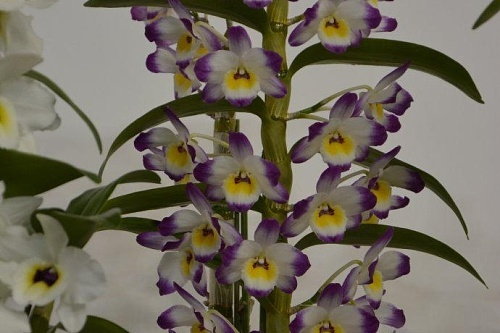
Spring dendrobium is often listed as a New Year flower before the Spring Festival. When the newly purchased plants are placed indoors for viewing, they should be kept away from heating and air conditioning to avoid direct hot air, otherwise the flowers will wither quickly. The flowers will naturally wither after about three weeks of blooming, and the remaining flowers should be cut off in time. Water when the soil is dry and wet, and avoid water accumulation in the pot soil to avoid root rot. But the air humidity should be high and good ventilation is required. Spray foliar fertilizer 1 to 2 times a month during the growing season, and solid compound fertilizer can also be applied once every February to March. Pay attention to light fertilizer rather than strong fertilizer when applying fertilizer.
Since spring dendrobium needs a certain low temperature stimulation to form flower buds, it needs to be treated with low temperature for one month at 10℃ to 13℃ in November, and watering should be stopped. Watering can be resumed after the flower buds are extended. When the temperature of spring dendrobium treated with low temperature is raised, the temperature should not exceed 10℃, and the temperature should not be raised to above 28℃. Otherwise, if this situation lasts for 7 to 10 days, the plant will produce “re-bud” phenomenon, that is, the sprouted flower buds will reverse to leaf buds. This must be done with extra care.
Related comments
Flower language: Spring dendrobium is the “lady of the family” in the orchid family. It not only has colorful flowers, but also beautiful stems and leaves, and has extremely high ornamental value. Spring dendrobium has a graceful shape and an elegant and noble temperament, so it is called the “flower of success”. People often present it to their beloved elders.
How to repot
The planting material for spring dendrobium is generally a mixture of charcoal, tree fern roots and sphagnum moss. It should be repotted once every 2 to 3 years to replace the acidified planting material and promote future growth.
The method is to remove the old planting material and cut off the rotten old roots after pouring out the plant. If the plant is large, you can use a larger flower pot, fill a layer of charcoal at the bottom of the pot, and then enlarge the plant, fill it with new planting material and place it in a semi-shaded place.
Germplasm identification
Spring dendrobium (beautiful flower dendrobium) Dendrobium loddigesii Rolfe is a perennial herbaceous plant of the genus Dendrobium in the orchid family, also known as ring grass dendrobium, pink flower dendrobium or earring dendrobium. Dendrobium candidum is mainly distributed in Guizhou, Guangxi, Yunnan and Guangdong. It is a commonly used precious Chinese medicinal material in my country. It has the effects of nourishing yin and clearing heat, benefiting the stomach and promoting fluid production, moistening the lungs and relieving cough. It mainly contains chemical components such as polysaccharides, alkaloids and Stilbenoids.
